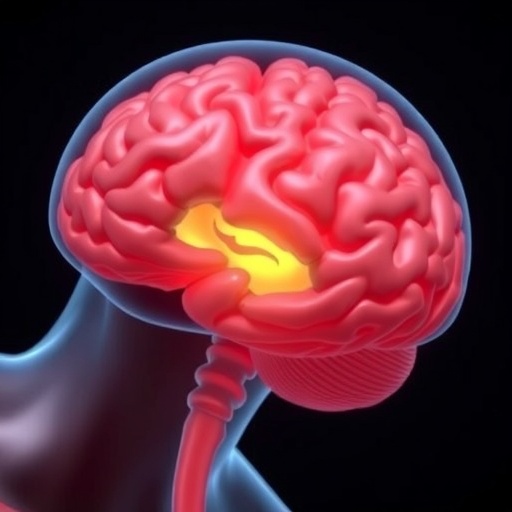Recent scientific investigations have shed light on the intricate relationship between brain structure and sex differences, paving the way for a deeper understanding of human neuroanatomy. A groundbreaking study, led by researchers including Hostalet, Salgado-Pineda, and Alemán-Gómez, examines sulcal pits—small indentations on the brain surface—as potential biomarkers for differentiating male and female brains. This discovery could have profound implications for fields as diverse as psychology, neuroscience, and medicine, particularly in understanding sex-related variations in behavior and cognition.
The research provides a captivating exploration into how subtle anatomical variations in the brain may influence fundamental aspects of human life, from emotional processing to cognitive functioning. Sulcal pits have been a relatively understudied feature in neuroanatomy, yet their role in signaling sex differences is increasingly coming under scrutiny. The study’s authors argue that these features, although minor in size, might carry significant weight in understanding biological and psychological variances between sexes.
Utilizing advanced neuroimaging techniques, the team analyzed MRI scans of healthy adult subjects to investigate the presence and distribution of sulcal pits. Their methodology was rigorous and precise, ensuring that their findings could be generalized across a diverse population. The meticulous nature of this research underscores the importance of employing state-of-the-art technology in neuroscience, especially when targeting subtle anatomical features that may have been overlooked in previous studies.
The ramifications of these findings extend beyond academic curiosity. By establishing a link between sulcal pits and sex-related brain differences, the researchers highlight the necessity for medical practitioners to consider sex as a critical variable in both diagnostic and therapeutic contexts. This paradigm shift calls for a reevaluation of existing frameworks within clinical settings, where historically, findings have often disregarded potential differences arising from sex.
Furthermore, the implications of the study resonate within the realm of mental health. Understanding the neuroanatomical differences that exist between sexes could enhance therapeutic approaches, particularly in treating mood disorders, anxiety, and various cognitive dysfunctions. As the field of psychology evolves, learning to incorporate biological dimensions into the understanding of mental health represents a significant leap forward.
In addition, the findings may open new avenues for research into conditions that exhibit marked differences in prevalence or presentation between genders. For instance, disorders such as depression and ADHD often have a varied expression in men and women. With sulcal pits potentially serving as indicators of sex-specific neurodevelopmental pathways, researchers could develop targeted interventions tailored to male and female patients, maximizing treatment efficacy.
Despite the promising results, the research also prompts a series of questions about the social implications of sex-related brain differences, particularly concerning gender identity and roles. As society continues to grapple with the concepts of masculinity and femininity, understanding biological differences at a brain level may influence how these ideas evolve. It is crucial for both scholars and the public to approach these findings thoughtfully, recognizing the potential for misuse in reinforcing stereotypes rather than fostering understanding.
The discourse surrounding the biological determinants of behavior is a delicate subject. Not only does it intersect with neurobiological research, but it also reaches into societal, cultural, and even ethical realms. As the scientific community embarks on this journey of uncovering sex differences in brain morphology, the public must stay informed and engaged, forming a comprehensive dialogue that values both knowledge and the responsibility that accompanies it.
The study, published in “Biology of Sex Differences,” positions itself at the forefront of evolving discussions on neuroanatomy, emphasizing the urgent need for inclusive health research that acknowledges the role of sex. Ensuring that sex differences are adequately represented in scientific literature will lead to more nuanced understandings of health and illness.
Moreover, the findings align with a broader trend in neuroscience that seeks to unravel the complexities of the human brain through collaborative, interdisciplinary research. As experts from fields as varied as genetics, psychology, and neuroimaging converge to explore these dimensions, the potential for groundbreaking discoveries expands exponentially. Innovations in technology and methodology, married to collaborative thinking, lay the groundwork for a new era in understanding human neurobiology.
In conclusion, Hostalet and colleagues’ research illuminates crucial connections between structural brain characteristics and sex, inviting further inquiries into the biological underpinnings of behavior. As the academic and scientific communities unravel these findings, it becomes increasingly apparent that understanding human differences—even those grounded in biology—could also promote empathy and integration rather than division. Ultimately, embracing these discoveries within the context of greater human health allows us to move toward a more informed, equitable future.
This ongoing exploration of sulcal pits as markers of sex-related differences in the brain promises to catalyze further research, fostering an environment where curiosity and innovation drive us toward understanding the complexities of human behavior.
Subject of Research: Brain differences related to sex and their potential implications.
Article Title: Sulcal pits as potential markers of early sex-related human brain differences in healthy adults.
Article References:
Hostalet, N., Salgado-Pineda, P., Alemán-Gómez, Y. et al. Sulcal pits as potential markers of early sex-related human brain differences in healthy adults.
Biol Sex Differ 16, 55 (2025). https://doi.org/10.1186/s13293-025-00733-4
Image Credits: AI Generated
DOI: 10.1186/s13293-025-00733-4
Keywords: sulcal pits, sex differences, neuroanatomy, brain structure, mental health.




